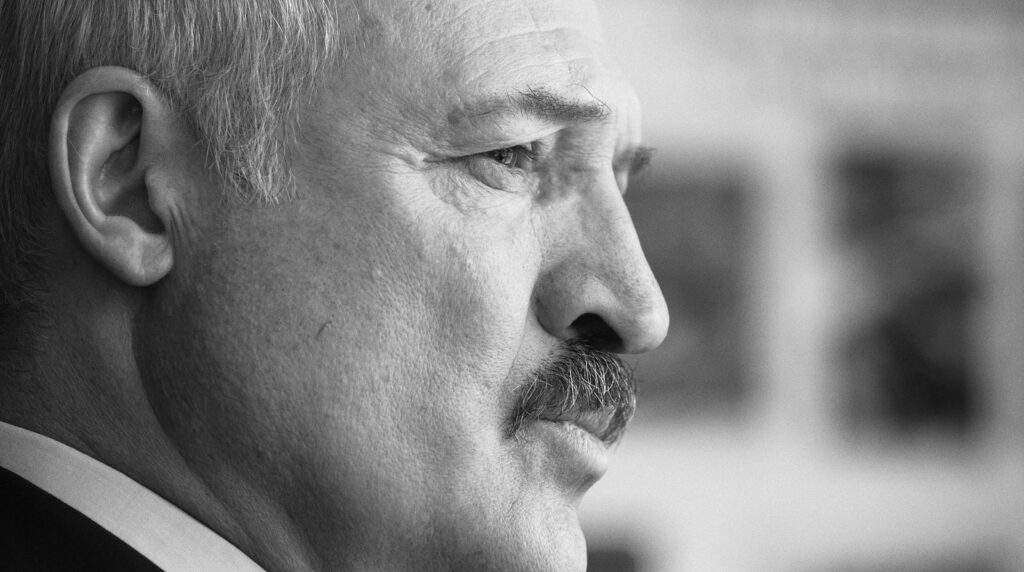Sentenced in 2022 to three years in prison for “slandering” the dictator of Belarus Alexander Lukashenko, civil activist Ihar Lednik died in jail on February 19, the fifth political activist to die in a Belarusian jail since 2022, according to Viasna, a human rights group.
At 64, Lednik’s health had been poor for some time and the harsh conditions of his imprisonment only accentuated his suffering. Sviatlana Tsikhanouskaya, the exiled leader of the Belarusian democratic opposition, said that she was “heartbroken” by the news of Lednik’s death, calling him, “a tireless fighter for freedom”.
Imprisoned for little more than writing an article discussing the country’s foreign policy for a journal of the Belarusian Social Democratic party (BSDP), Lednik’s real crime, as far as the Belarusian authorities were concerned, was his role as a leading figure in the BSDP.
Harassed and persecuted for years, the BSDP was formally outlawed in 2023, along with just about every other Belarusian political party not loyal to Lukashenko. Despite many of their leaders being in jail or exile and their activities strictly controlled, the Popular Front, Conservative Christian party, Green party, Republican party, People’s Accord, and the United Civil party were all deemed too great a threat to the Belarusian leader—Lukashenko perhaps wary of underestimating how much damage even a marginalised opposition can do.
In 2020, having barred almost all opposition candidates from that year’s presidential election, Lukashenko overlooked the candidacy of Tsikhanouskaya (whose husband, Syarhey Tsikhanouski was one of those barred from standing for election-he was later arrested and remains in prison). By any objective measure, Tsikhanouskaya won the election, although Lukashenko declared himself the winner with a barely plausible 81 per cent of the vote.
“They didn’t think a housewife would unite people,” Tsikhanouskaya later said.
Tsikhanouskaya was forced into exile in Lithuania days later amid widespread anti-Lukashenko demonstrations that fizzled out only after brutal state repression including the arrest of thousands of protesters.
Since then, repression has continued. According to Human Rights Watch, almost 1,500 political prisoners remain behind bars, including human rights defenders, journalists, lawyers, opposition politicians, culture workers, trade unionists, and activists. Political prisoners are regularly held incommunicado and are subject to torture and other forms of ill-treatment.
Tens of thousands of Belarusians have, like Tsikhanouskaya, been forced into exile. In a move squarely directed against opposition figures living abroad, in September 2023 Lukashenko signed a decree abolishing the authority of consulates and diplomatic missions to issue, replace, or extend the passports or identification cards of Belarusians abroad, making it obligatory for them to return to Belarus.
Tsikhanouskaya and her team are currently working on a plan to issue shadow passports that would help prevent those Belarusians unable to return for fear of arrest from remaining stateless.
An economy hitched to Russia, and China
Lukashenko’s support for the 2022 Russian invasion of Ukraine (Belarusian forces did not take part in the invasion, but Minsk allowed Russia to launch part of the invasion from its territory, offering Russia the shortest possible land route to Kyiv) made Belarus the target of sweeping Western sanctions targeting its petrochemical industry, production of fertilisers, banking, financial services, and transport.
Lukashenko meets his Russian counterpart Vladimir Putin regularly and has offered to host Russian tactical nuclear weapons on Belarussian territory while railing against imagined NATO plots to “destabilise” the country.
Although Belarus was already the subject of some Western sanctions over the government’s violent treatment of protestors in the aftermath of the 2020 presidential election, the new sanctions severely weakened its economy—contributing to its 4.7 per cent contraction in GDP in 2022—and reoriented trade away from Europe towards Russia and China.
The economy has since largely recovered, made possible thanks to a widening of Russia’s economic support and accommodative domestic policies, according to the Vienna Institute for International Economic Studies (wiiw).
The Vienna Institute warns, however, that the final months of 2023 suggested that the recovery has probably run its course, and that 2024 is likely to see lower GDP growth of around two per cent. If the process of successful reorientation to new markets continues, economic growth could accelerate somewhat in the coming years, but will remain modest.
Indeed, with Lukashenko having hitched his country’s immediate future to Russia and the prospect of renewed economic integration with its European neighbours (a process which had quietly, slowly been taking place in the half decade preceding the 2020 presidential election) off the table for the foreseeable future, the outlook for long-term growth is uncertain at best.
‘A farce, a circus’
A parliamentary election, set to take place on February 25, will not change the present, isolationist course pursued by Belarus in the slightest. While Belarusians will, in theory, be able to vote for candidates from four parties, the Belaya Rus party (created in 2007 with the sole purpose of supporting Lukashenko) will again win a healthy majority.
The three other parties contesting the election (the Communist party of Belarus, the Republican part of Labour and Social Justice, and the Liberal Democratic party) are all loyal to Lukashenko and will win a handful of seats between them—allowing the dictator to point to what he will no doubt label as a free and fair election in a thriving democracy. With the genuine opposition barred from taking part, it will be anything but.
“The Belarusian parliament is nothing but a farce, a circus. The regime speaks of elections, but they have nothing to do with democracy,” said Tsikhanouskaya this week.
Lukashenko is certainly not taking any chances of anyone ruining the carefully choreographed vote. Independent observers from the Organisation for Security and Cooperation (OSCE) have not been invited to monitor the election, while in recent weeks a fresh spate of arrests has seen potential troublemakers locked up.
On February 20, Lukashenko warned that what he called the “Belarusian self-exiled opposition” was planning to destabilise the country on election day.
“Their handlers from the foreign special services are working on such scenarios,” he told senior security officials, claiming that one option was a “coup d’etat during this election campaign”.
“More likely,” he added, “is that they will use the current election campaign as a rehearsal and initial stage to prepare for a coup d’état during the presidential election of 2025.”
Lukashenko also offered a third means of potential “destabilisation”—soft power.
“Some instruments of soft power have been outlawed in Belarus,” he said, offering “anti-Belarusian foundations” and “so-called human rights groups” as examples. “But they are trying and will continue to try to influence emotionally vulnerable people through social media and messengers, to develop new channels of communication and control over the masses.
“They have sold out their homeland, they are running out of money. Life in Europe is expensive. Therefore, [the opposition] will go to any lengths [to stage a coup d’etat].”
Many of the millions of Belarusians who, out of fear of reprisals, will grudgingly vote on February 25 for Lukashenko-approved candidates no doubt wish that were true.







